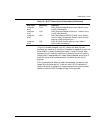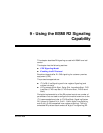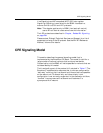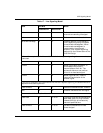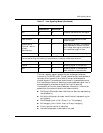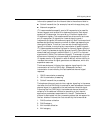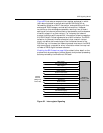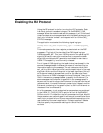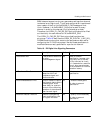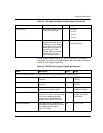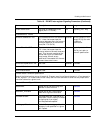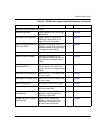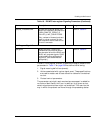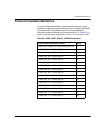
Enabling the R2 Protocol
November 2009 342
Enabling the R2 Protocol
Using the R2 protocol is similar to using the LEC protocols. Each
individual channel is enabled using an L4L3mENABLE_CAS
message. When the module receives this message, it will initialize all
timers and data structures associated with the specified channel, put
the line in idle state “onhook” and respond with an L3L4mCAS_
STATUS message.
The application must select the following signaling type:
l43msg.data.cas_data.signalling_type = IISDNsigtypeR2_
CAS;
This mode operates the inter-register protocol stack on the DSP
processors. The iisdn.h file also identifies CAS signaling type
IISDNsigtypeR2_MF. This is an IISDN provision for operating R2
signaling on certain controller modules that incorporate modem
chips that provide basic MF generation and detection services to
IISDN. This capability is not currently released.
For all types of CAS signaling, the lapdid value (zero-based) in the
common message header indicates the network interface (line) on
the module receiving the message. The call reference value (field
call_ref) is a 16-bit value that must have the lapdid value in the most
significant 8 bits and the B-channel in the least significant 8 bits (if
no B-channel needs to be specified, use 0 for the least significant
byte). Since not all BSMI messages involve a B-channel, there is no
field in the common message header to specify the B-channel. For
some messages the B-channel is specified in the message-specific
data structure, and for others the B-channel is inferred from the call
reference value. Line and B-channel numbering is 0-based, and the
B-channel numbering is line-specific (that is, the first B-channel on
the second line is numbered 0).
All of the necessary trunk customization parameters are contained
in the IISDN_E1_CAS_R2_DATA portion of the L4L3mENABLE_
CAS structure. It is important that all parameters be filled. Most of
the parameters are network specific and cannot be modified without
resulting in protocol failure. Others are modifiable according to the
requirements of the user's application. Dialogic supplies C header
files that specify the parameter settings for certain national
variants.



